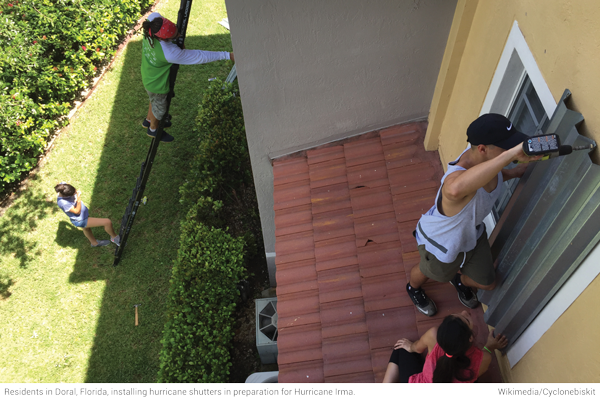While the life-threatening hurricane weakened slightly, Irma grew in size meaning that most of the state will face hurricane-force winds as it cuts a path through the peninsula into Georgia. Now a Category 4 storm with top winds of 150 miles (241 kilometers) an hour, Irma will maintain its strength until it strikes Florida early Sunday, the U.S. National Hurricane Center said in an advisory around 11 a.m. Eastern time. The storm has already left at least 11 people dead and thousands homeless across the Caribbean.
“Much of Florida, especially the southern half, is in for a really long and horrible day on Sunday,” said Todd Crawford, lead meteorologist at The Weather Company in Andover, Massachusetts. Another example of “the power of nature on a heavily populated part of the U.S. coastline is imminent, and the costs will be great.”
Mandatory evacuations were issued for the Florida Keys and other areas. Around 650,000 people were told to leave Miami-Dade, the largest evacuation ever attempted in the county. President Donald Trump’s Mar-a-Lago estate was ordered to be evacuated along with the rest of Palm Beach following forecasts of catastrophic winds and a powerful storm surge.
Irma is one of three hurricanes churning in the Atlantic Basin. Jose, the third major hurricane of the 2017 season with top winds of 150 miles per hour, is forecast to turn northeast and miss the U.S. In the Gulf of Mexico, Katia strengthened as it moved slowly toward Veracruz, Mexico, where it’s forecast to come ashore early Saturday. The country was also struck by a powerful earthquake on Friday, shaking buildings in the capital and triggering a tsunami warning.
Irma’s hurricane-force winds now extend for 140 miles, creating a danger zone that would extend from West Palm Beach on the Atlantic coast to Fort Myers on the Gulf of Mexico. That’s creating an “insurance industry nightmare” as every county in the state could experience damaged roofs and power outages so vast it overwhelms utility repair efforts, said Chuck Watson, a Savannah, Georgia-based disaster modeler with Enki Research.
Damages could easily top $135 billion in Florida, with other economic losses pushing the price tag as high as $200 billion, Watson said. Preliminary estimates show losses across the Caribbean nearing $5 billion, Josh Darr, lead meteorologist with insurance broker JLT Re Ltd. wrote in his blog Friday.
Total losses from Katrina reached $160 billion in 2017 dollars after it slammed into New Orleans in 2005.
“Wind damage is totally going to throw a wrench into the insurance industry,” Watson said. “You are talking about companies failing.”
Insurers including XL Group Ltd. and Everest Re Group Ltd. recovered some ground after falling 5.1 percent and 6.8 percent respectively Thursday. The storm may knock out power to more than 3 million homes and businesses, curb natural gas demand in one of the largest U.S. markets and threaten $1.2 billion worth of crops in Florida -- the nation’s top grower of fresh tomatoes, oranges, green beans, cucumbers, squash and sugarcane. Hurricane Irma bulked up ahead of an all but certain collision with southern Florida after devastating a chain of Caribbean islands and threatening to become the most expensive storm in U.S. history.
Hurricane Irma bulked up ahead of an all but certain collision with southern Florida after devastating a chain of Caribbean islands and threatening to become the most expensive storm in U.S. history.
Deadly Irma Nears Florida As Insurers Face `Nightmare’ Scenario
September 8, 2017
« Previous Article
| Next Article »
Login in order to post a comment








